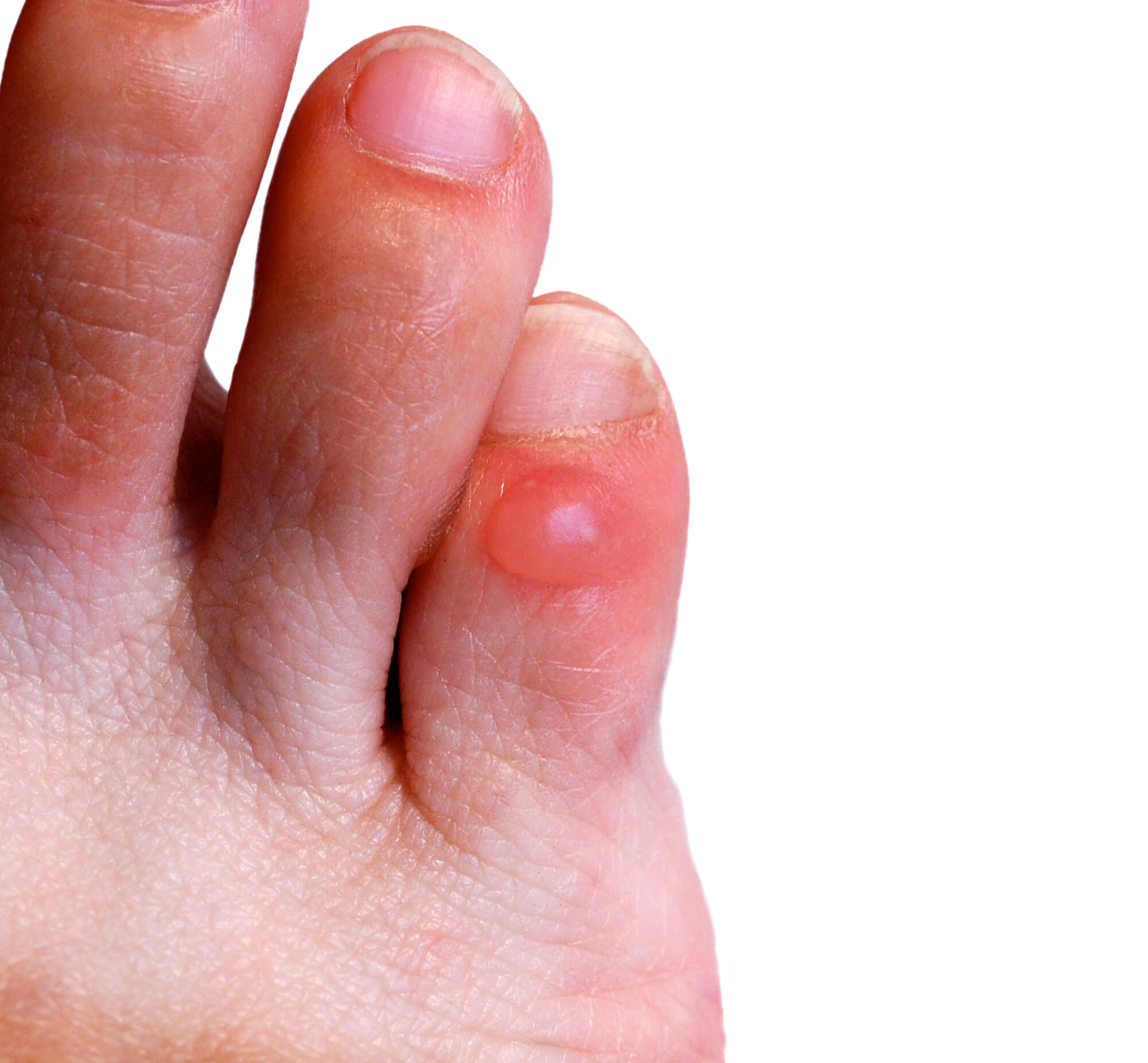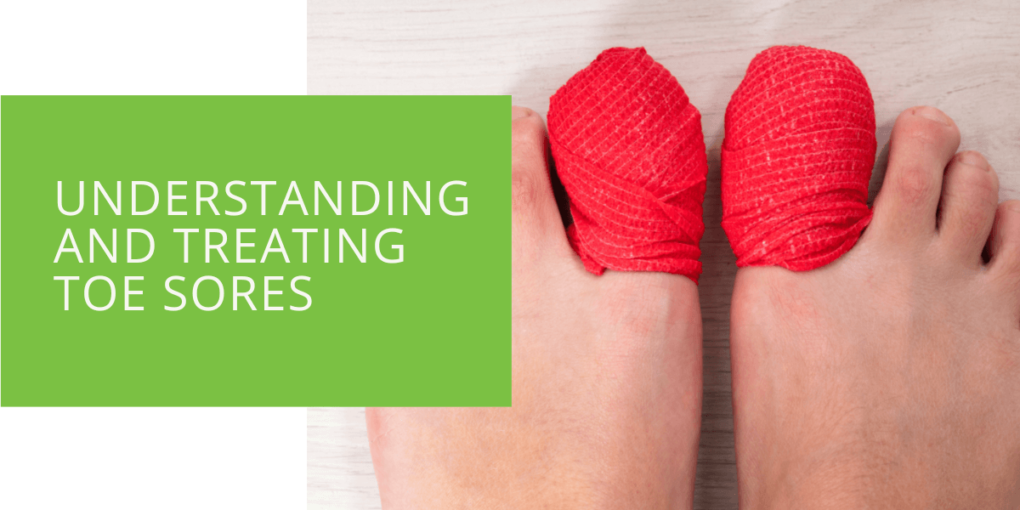Understanding and Treating Toe Sores
Toe sores can be a real pain, both literally and figuratively. They can make walking, running, or even wearing shoes difficult. Various factors, including friction, pressure, and injury, can cause toe sores. They can also be a sign of a more serious underlying condition. This article will discuss the causes, symptoms, and treatment options for the sores. We will also provide tips for preventing and managing toe sores and when to seek medical attention.
What are Toe Sores?
Toe sores are any sore or lesion that develops on the toes. Various factors, including friction, pressure, and injury, can cause them. Common types of toe sores include blisters, calluses, and corns.
- Blisters: Blisters are small, fluid-filled sores that can occur due to friction or pressure. Friction blisters, for example, can develop when a shoe rubs against the skin. These blisters are often painful and can make walking or wearing shoes difficult.
- Calluses: Calluses are thickened areas of skin that develop due to pressure or friction. They are often found on the soles of the feet and can make walking or wearing shoes difficult.
- Corns: Corns are small, circular sores usually caused by pressure from ill-fitting shoes. They can be found on the toes, soles of the feet, or even on the palms of the hands.

Symptoms and Diagnosis of Toe Sores
The symptoms of toe sores vary depending on the sore and the underlying cause. Common symptoms include pain, itching, redness, and swelling.
To diagnose toe sores, a podiatrist will perform a physical examination and ask about your symptoms and medical history. In some cases, they may also take a culture or perform other tests to identify the cause of the sore.
Prevention and Treatment of Toe Sores
The best way to prevent toe sores is to take care of your feet and keep them healthy. This includes wearing shoes that fit properly and are appropriate for your activity. It's also important to keep your feet clean and dry and to avoid walking barefoot in public places.
Home remedies for toe sores include using a bandage to cover the blister, applying antibiotic cream to the sore, and taking over-the-counter pain medication.
If you have an open blister, it's important to keep it clean and covered with a sterile bandage to prevent infection. See a podiatrist immediately if you notice signs of infection, such as redness, swelling, or pus.
If your toe sores are caused by an underlying condition, such as diabetes, your podiatrist may recommend a different treatment plan.

Living with Toe Sores
If you have toe sores, it's important to manage pain and discomfort. This may include taking over-the-counter pain medication, applying a cold compress to the sore, and elevating your foot to reduce swelling.
To prevent the recurrence of toe sores, it's important to keep your feet healthy and take steps to prevent future sores. This may include wearing shoes that fit properly, keeping your feet clean and dry, and avoiding walking barefoot in public places.
When to Seek Medical Attention?
See a podiatrist immediately if you notice signs of infection, such as redness, swelling, or pus. This could signify a bacterial infection, which will require medical treatment.
See a podiatrist immediately if you have a blister that is open and not healing or fever, or other signs of infection.
Suppose you have diabetes or other underlying medical conditions that affect your circulation. In that case, it's especially important to take care of your feet and seek medical attention if you develop a sore.
Conclusion
Various factors, including friction, pressure, and injury, can cause toe sores. They can also be a sign of a more serious underlying condition. To prevent toe sores, it's important to take care of your feet and keep them healthy by wearing shoes that fit properly and keeping your feet clean and dry. If you have any concerns, it's always best to seek the advice of a podiatrist. They can help you to heal and prevent future recurrence of the sores.
FAQ
How do you get rid of toe sores?
The best way to get rid of toe sores is to take care of your feet and keep them healthy. This includes wearing shoes that fit properly and are appropriate for your activity, keeping your feet clean and dry, and avoiding walking barefoot in public places. If you have a blister that is open, it's important to keep it clean and covered with a sterile bandage to prevent infection. If you have an underlying medical condition, such as diabetes, your podiatrist may recommend a different treatment plan.
Why am I getting sores on my toes?
Various factors, including friction, pressure, and injury, can cause toe sores. They can also signify a more serious underlying condition, such as diabetes or poor circulation. If you have recurrent or persistent sores, it's best to seek the advice of a podiatrist, who can help to identify the underlying cause and provide appropriate treatment.
Should you cover a blister or let it breathe?
If you have a blister that is open, it's important to keep it clean and covered with a sterile bandage to prevent infection. This will help to promote healing and reduce the risk of complications. However, changing the bandage regularly is important to allow the blister to breathe and prevent moisture from building up. Avoiding friction and pressure on the blister can also help to promote healing. If the blister is not healing or showing signs of infection, it's best to seek the advice of a podiatrist.
How do you make blisters heal faster?
To make blisters heal faster, it's important to take care of your feet and keep them healthy. This includes wearing shoes that fit properly and are appropriate for your activity, keeping your feet clean and dry, and avoiding walking barefoot in public places. If you have a blister that is open, it's important to keep it clean and covered with a sterile bandage to prevent infection. You can also take over-the-counter pain relievers to reduce pain and inflammation. If you have an underlying medical condition, such as diabetes, your podiatrist may recommend a different treatment plan. Additionally, keeping the blister dry and clean, avoiding friction and pressure on the blister, and treating the blister with a blister care ointment or blister pad can help speed up the healing process.

